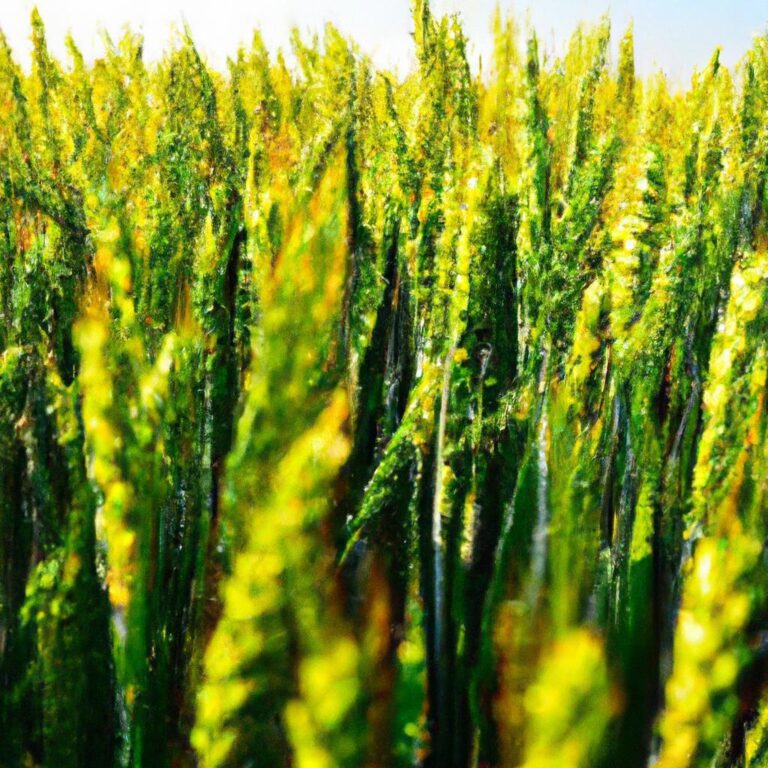In a world where abundance often coexists with scarcity, the quest for food security emerges as a critical frontier in our collective journey towards a more equitable future. As the globe grapples with complex challenges such as climate change, geopolitical unrest, and economic disparity, the need for sustainable nourishment becomes increasingly urgent. ”Ensuring Nourishment: The Path to Food Security and Aid” delves into the intricate tapestry of food systems that sustain us, exploring the pathways to ensuring that every individual, regardless of circumstance, has access to the nourishment they need. From innovative agricultural practices to the vital role of humanitarian aid, this article seeks to illuminate the multifaceted strategies that can transform vulnerability into resilience, and scarcity into abundance. Join us on a thought-provoking exploration of how we can cultivate a world where food security is not merely an aspiration, but a universal reality.
Building Sustainable Agricultural Practices for Long-Term Food Security
In the quest for enduring food security, the importance of integrating sustainable practices into agriculture cannot be overstated. By prioritizing methods that promote ecological balance and conserve resources, we pave the way for future generations to thrive. Essential strategies include:
- Crop Diversity: Rotating a variety of crops to enhance soil health and reduce dependency on single crops.
- Organic Fertilization: Utilizing compost and green manure to nourish the soil without harmful chemicals.
- Water Conservation: Implementing drip irrigation and rainwater harvesting to maximize water efficiency.
- Agroforestry: Integrating trees and shrubs into farming systems to improve biodiversity and microclimate.
Furthermore, education and community involvement are pivotal in fostering a culture of sustainability. Farmers must be equipped with knowledge about innovative techniques and technologies that enhance efficiency and yield. Key elements for successful implementation include:
| Element | Importance |
|---|---|
| Training Programs | Empower farmers with essential skills and information. |
| Community Workshops | Facilitate knowledge exchange and support local initiatives. |
| Research Collaborations | Encourage partnerships between farmers and scientists for innovation. |

Empowering Communities Through Education and Resources
In our quest to achieve food security, it is paramount to recognize the strength of communities coming together to support one another. By fostering a strong sense of belonging and collaboration, we can create an environment that encourages sustainable food practices and resource sharing. Community-led initiatives such as urban gardens, food co-ops, and educational workshops not only empower individuals but also cultivate resilience against the challenges posed by food scarcity. Key benefits of these initiatives include:
- Knowledge Sharing: Facilitating workshops that teach gardening skills, nutrition, and local food sourcing.
- Resource Accessibility: Creating pathways for community members to access fresh produce and essential supplies.
- Network Building: Connecting individuals to local farmers, suppliers, and like-minded organizations to foster collaboration.
Moreover, the impact of education can extend beyond the individual to create a ripple effect within the community. By arming residents with the knowledge and tools necessary for sustainable practices, we pave the way for a more self-sufficient future. Investing in educational programs targeting schools, adults, and families can lead to significant improvements in food literacy and production techniques. The table below illustrates some effective educational strategies:
| Strategy | Description |
|---|---|
| Cooking Classes | Hands-on sessions teaching healthy meal preparation using local ingredients. |
| Community Workshops | Engaging activities focused on composting, urban gardening, and preserving food. |
| School Programs | Curriculum integration of agriculture and sustainability for children. |

Innovative Approaches to Food Aid and Distribution
In an age where traditional methods of food distribution often fall short, innovative strategies are emerging to address the pressing challenges of food aid. Crowdsourced logistics platforms are redefining how surplus food is identified, collected, and delivered. These digital solutions harness the power of community volunteers and local organizations to streamline operations, reducing waste and maximizing efficiency. Similarly, mobile applications that connect food donors with nearby shelters and food banks are enabling quicker responses to urgent needs. Enhancing transparency, these technological tools not only foster greater community involvement but also create a sense of accountability among stakeholders.
Moreover, the integration of agricultural technology has paved new avenues for sustainable food aid. Initiatives that leverage vertical farming systems within urban settings demonstrate how unused spaces can transform into productive environments, providing fresh produce to those in need. Additionally, blockchain technology is being utilized to trace food supplies from source to recipient, ensuring that aid reaches the most vulnerable populations without interruption. By combining these modern methodologies, organizations can cultivate a more resilient and effective food aid landscape, ultimately leading to improved food security and self-sufficiency within communities.

Collaboration Across Sectors for Enhanced Nutritional Outcomes
In the quest for sustainable food security, a multifaceted approach that encourages collaboration across different sectors is essential. The intersection of government, private industry, non-governmental organizations (NGOs), and local communities can foster innovative solutions to nutritional challenges. By leveraging shared resources and knowledge, stakeholders can develop programs that not only address immediate food shortages but also promote long-term health benefits. This synergy can enhance food distribution systems, making nutritious options more accessible to vulnerable populations.
Successful partnerships can achieve remarkable outcomes. Some key elements include:
- Public Policy Advocacy: Collaborative efforts can drive legislative changes that support food security initiatives.
- Shared Education Programs: Joint campaigns can raise awareness about nutrition and health, empowering individuals to make better food choices.
- Research Collaboration: By pooling resources for nutritional research, diverse sectors can identify and promote best practices that lead to improved dietary habits.
| Sector | Role in Collaboration |
|---|---|
| Government | Policy development and funding |
| Private Sector | Innovation and sustainability practices |
| NGOs | Grassroots outreach and education |
| Local Communities | Needs assessment and implementation |
By understanding the unique contributions each sector brings to the table, we can design a more effective framework for improving nutritional outcomes. Each actor has an integral role in creating a holistic strategy that prioritizes the welfare of individuals and communities alike, ensuring that no one is left behind in the fight for food security.
The Conclusion
In a world where the specter of hunger looms large, the pursuit of food security emerges as a critical journey we must undertake together. As we navigate the complexities of nourishment — from sustainable agricultural practices to innovative aid solutions — it becomes clear that every step we take shapes the future of communities worldwide. The path is not without its challenges, but with collaboration, empathy, and unwavering resolve, a nourished tomorrow is within reach.
Let us remember that ensuring food security is not merely an obligation; it is a shared commitment to humanity’s well-being. By fostering partnerships across borders and sectors, we can transform the landscape of global food systems, making nourishment equitable and accessible for all. As we look ahead, let us carry forth the lessons learned and the stories shared, igniting a collective effort that champions the right to food as a cornerstone of human dignity. In this pursuit, we find not just a solution to hunger, but a pathway to a more just, resilient, and thriving world for generations to come.

